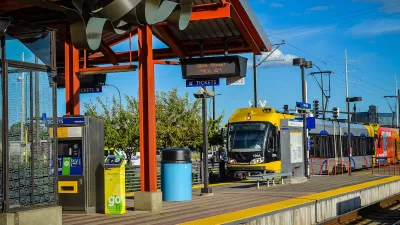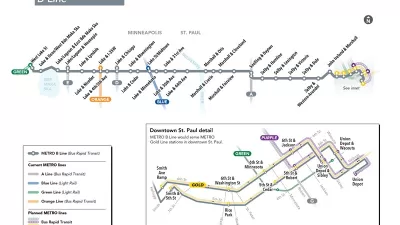The free fare pilot program is only partially complete, but even if it is deemed “successful,” it is unclear how — or if — Metro Transit plans to adopt free fare policies for the long term.

The first six months of a 18-month free fare pilot program in the Twin Cities has brought a double-digit increase in ridership, according to a recent Axios article. Since fares were waived on two popular bus routes, ridership along those routes have grown by 38 percent and 18 percent; overall Metro Transit bus ridership grew only 11 percent over the same time period, writes Axois reporter Nick Halter.
The pilot program was mandated by the Minnesota Legislature last year, a natural continuation of a 2021 reduced fare pilot program, according to State Rep. Sydney Jordan. Jordan told Axois the program has gotten good feedback in her district. “There's a lot of good data that shows that we should look more into this," she said.
Those next steps won’t become clear until the transit agency provides a full report once the pilot is over. But, Halter reports, it seems unlikely the Metro Transit will be made a fully free system any time soon. For one, there isn’t enough support at the legislature for that kind of action. The transit agency is also currently implementing a $37.7 million upgrade of its payment system and counts fare enforcement as one of its tools for increasing public safety on light rail trains.
However, some people argue that free fares could be a better long-term approach for safer buses and trains. State Rep. Brad Tabke, who authored a transit safety bill last session, told Axios that having free fares helps get more people on transit, which ultimately makes it safer. Whether that plays out in the final data from the pilot remains to be seen.
FULL STORY: Metro Transit's free fare pilot drives big ridership increase in Twin Cities

Study: Maui’s Plan to Convert Vacation Rentals to Long-Term Housing Could Cause Nearly $1 Billion Economic Loss
The plan would reduce visitor accommodation by 25,% resulting in 1,900 jobs lost.

North Texas Transit Leaders Tout Benefits of TOD for Growing Region
At a summit focused on transit-oriented development, policymakers discussed how North Texas’ expanded light rail system can serve as a tool for economic growth.

Why Should We Subsidize Public Transportation?
Many public transit agencies face financial stress due to rising costs, declining fare revenue, and declining subsidies. Transit advocates must provide a strong business case for increasing public transit funding.

How to Make US Trains Faster
Changes to boarding platforms and a switch to electric trains could improve U.S. passenger rail service without the added cost of high-speed rail.

Columbia’s Revitalized ‘Loop’ Is a Hub for Local Entrepreneurs
A focus on small businesses is helping a commercial corridor in Columbia, Missouri thrive.

Invasive Insect Threatens Minnesota’s Ash Forests
The Emerald Ash Borer is a rapidly spreading invasive pest threatening Minnesota’s ash trees, and homeowners are encouraged to plant diverse replacement species, avoid moving ash firewood, and monitor for signs of infestation.
Urban Design for Planners 1: Software Tools
This six-course series explores essential urban design concepts using open source software and equips planners with the tools they need to participate fully in the urban design process.
Planning for Universal Design
Learn the tools for implementing Universal Design in planning regulations.
City of Santa Clarita
Ascent Environmental
Institute for Housing and Urban Development Studies (IHS)
City of Grandview
Harvard GSD Executive Education
Toledo-Lucas County Plan Commissions
Salt Lake City
NYU Wagner Graduate School of Public Service





























